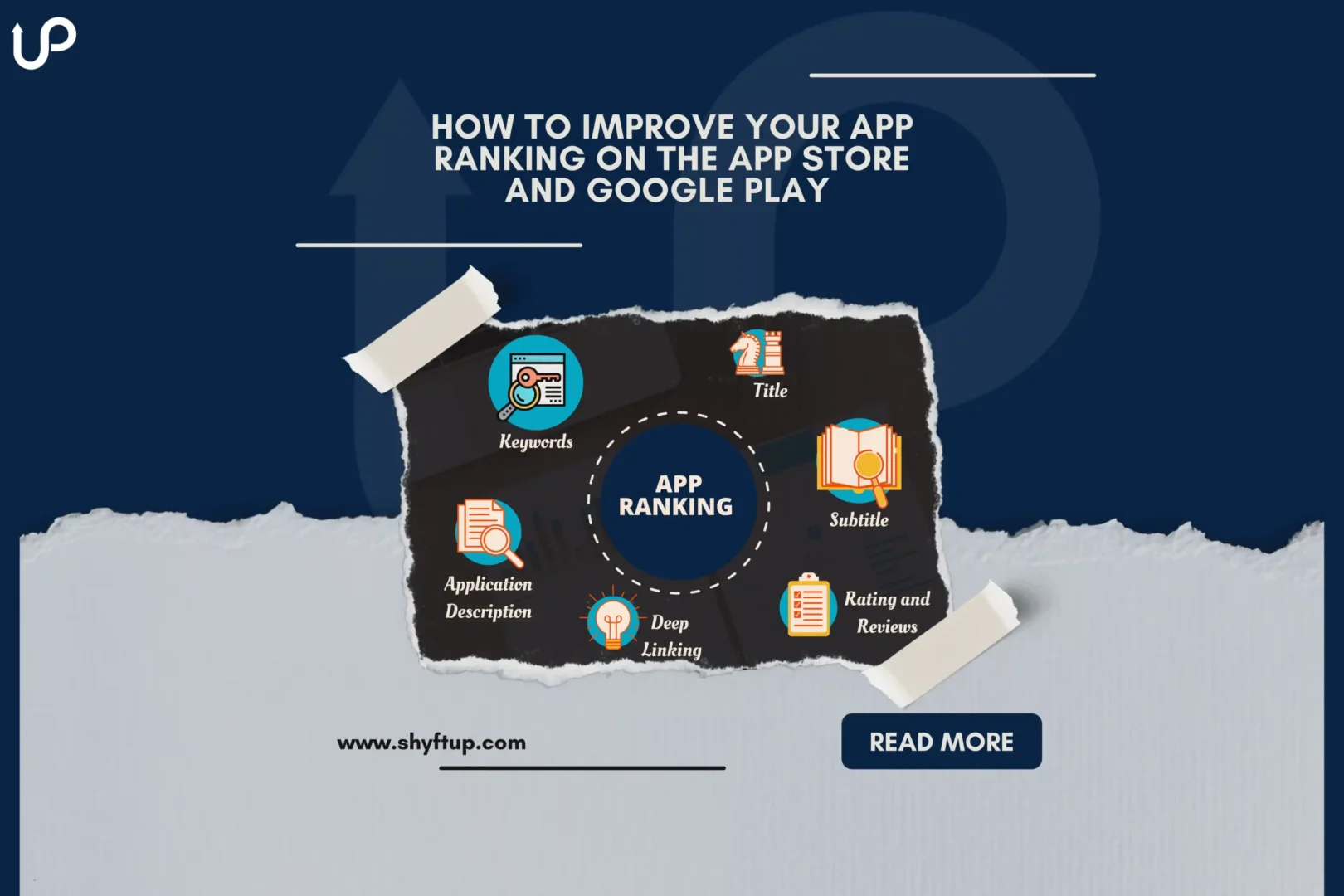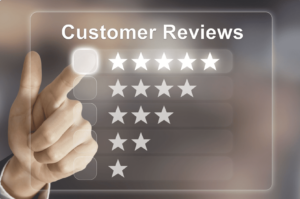
And the good news? Many App Store Optimization (ASO) pundits have some well-considered ideas regarding ranking improvements and sustaining them to get your app ranked highly.
Do Google Play and App Store Rankings Matter?
The App Store environment is in constant flux as users navigate the internet in multiple ways, trying to unearth innovative technologies. They enter the arena daily, constantly testing the limits. Given such a volatile environment, developers ask if high rankings on either store carry the weight they used to. Is it so important to feature in a category? In giving an informed answer to the question of importance, it’s vital to understand that although the iOS and Android stores on the surface look alike, their respective ranking protocols diverge significantly.
App Store Ranking Factors
When the App Store launched, and for years after that, category structuring ruled the roost. It worked in the developers’ favor because the first step was to select a relevant category and then do all the right things to beat out competitors in that lane. From there, if you could rise above the crowd, a blockbuster ranking delivered fantastic visualization.
Unfortunately, that’s changed dramatically. The Apple platform has shifted category prioritization down several notches, preferring less defined sections instead and showcasing carefully extracted content.
The categories are still there but not nearly as prominent as they were. In short, categorization previously significantly influenced download decisions; but today, on its own, falls short of making the sale. Apple’s strategy of building curated content without category borders creates a format where keyword searches and organic ASO are considerably more crucial to discoverability.
Google Play Store Ranking Factors Connecting to App Store Optimization
Google Play categories still play a vital role. They’re easier to see than on the App Store. Indeed, the marketplace makes the top six apps within each subcategory instantly visible to users clicking on them. They even make it easy for browsers with sub-group green-colored “Top Chart” buttons that reflect rankings under the headings:
- Top Free
- Top Grossing
- Top Trending
- Top Paid
When browsing the categories comes into play, it’s unlikely that an app failing to feature in these subcategories will prevail. It leaves little doubt that category rating impacts Android app developers more than those into iOS technologies. Put another way, the relative ease of access to app categories and the enhanced visualization they provide has significantly more impact than their parallels in the App Store.
Notwithstanding the above, organic search is still the primary driver of app visualization following the app store trend. So, now that we’ve established the crucial role of keyword strategy, let’s get to it:
Factors In App Store Ranking
A. Application Name (Title)
The Title is a primary location for keyword insertion on both platforms. You have to believe that everyone in the app business knows it carries a heavy ranking weight. So, it’s more a case of being a relative drawback if your keywords are not there. View it as a must-do if you want to be in the running to top the charts. However, don’t expect it to have the independent power to take you through to a great result – it won’t necessarily set you apart.
Here are the parameters governing Title inclusion of keywords:
- Both stores – 30 characters available. Use them to the limit.
- At the same time, ensure it describes the app’s value proposition, including features and functions.
- Google Play reduced down to the above from 50 characters in 2020. It made other significant changes you should make it your business to understand.
B. Subtitle (Only Apple)
This doesn’t apply to Google Play and works similarly to the Title (see above), providing 30 characters for keyword insertion. Apple signifies that it doesn’t feature as strongly in the indexing for ranking position as the Title but also contributes. Again, we advise assuming that competitors are using this to the max. If you think over 2.2 million apps in the store, it’s a fair bet that a million-plus will follow the Title and Subtitle rules. Therefore, ignore these alerts to your substantial detriment. Moreover, users can see the Subtitles, so make sure the content makes sense and is relevant to your app.
C. Keywords (only Apple)
Let’s not confuse this with our statement (above) that keywords (as an overriding concept) are crucial to both Google Play and Apple. However, only iOS gives it a section for filling up to 100 characters (including commas); that’s what the heading refers to. You should already see that the keyword configuration as an overall strategy is like a jig-saw puzzle, starting with the Title and then waterfalling down to other provided spaces. They all count in an integrated way, as long as you make the most of each one. So for the keyword space in Apple, we advise you to:
- Squeeze in as many pertinent keys as you can.
- Avoid repeating those included in the Title and subtitle.
- Make each keyword unique.
D. Promo Text
The complexity here is that both provide room for this, but only Google Play (80 characters) embraces it for ranking purposes. On the other hand, Apple allows for more than double the content space (i.e., 170 characters). It’s visual to users, so developers should focus on keywords for Android and the following constructs for both:
- Your value proposition
- Features
- Benefits
E. Application Description (for Google Play only)
This is crucial to Android ranking and fits prominently into the indexing. In a way, it parallels the keyword section that pertains to iOS above. The platform provides space for up to 4000 characters, and we advise using every last inch of it. Here are some guidelines:
- Remain descriptive throughout, staying relevant to every aspect of the app.
- Inject vital keywords wherever they make sense without looking forced.
- Keywords in the top lines are most important.
- Google uses this content to pinpoint better app store search terms applicable to your app.
F. Localizations (only the App Store)
It provides an opportunity to optimize more than one language or country simultaneously. All the headings above and below apply to numerous languages, each one requiring a separate focus and exercise to appeal to what may be a culturally diverse market. As the classics say, if you have more than one fishing line in the water, the chances of catching a big one increase exponentially.
G. Number of Downloads and Revenue
Here we come to a massive ranking driver – it makes common sense. Both stores are in business to grow business, which means they need their audience to download apps as step one, ultimately leading to monetization. The latter occurs with paid installations and in-app purchases (i.e., a colossal revenue generator). Therefore, if your app successfully initiates an installation stream, the stores will recognize it. Why? Because they know more downloads connect to greater chances of the dollars rolling in.
- Step two is when the cash register finally rings and another level of ranking recognition enters the picture.
- Both metrics, separately and in unison, provide the ranking fuel every app needs to rise to the top.
- However, if the keyword strategy (as outlined above) is faulty, it weighs on the download and revenue ranking power. Again, we emphasize how integrative the approach should be, which we’ve pointed to throughout this article.
H. Delete Rate (Google Play only)
User churn negatively impacts installations and customer sustainability. We draw your attention to the following – an extract from Shyftup’s article on linking:
- A download doesn’t mean usage forever.
- Close to 20% of users download apps only once.
- On the other side of the coin, 40% of users deploy it more than eleven times.
- Meaning that 60% of customers use the app eleven times or less.
- And 40% of users engage with the app two to eleven times, then stop.”
- Therefore, user churn is a significant obstruction to progress.
- Thus, Android indexes deletions, viewing them as contributors to customers leaving the ship and diluting search result success.
- Apple doesn’t share Google’s assessment, judging performance only in the download direction. iOS believes that if installations fail to monetize, it will reflect in the revenue metrics their algorithm focuses on, which indirectly accounts for churn in iOS.
I. Rating and Reviews
Apple Store and Google Play agree that ratings boost conversions. Therefore, as ratings climb, so likely will also your store ranking. How much is not clear, but it is a catalyst.
Only Google Play takes reviews into account in their indexing. This can work in your favor, but only if keywords come into play as they appear in the reviews (without making them look false). Of course, users write reviews, so putting keywords into their content isn’t straightforward. Still, it’s quite possible to get the wording right for those customers you are close to.
J. Recent updates
Android and iOS respect developers who provide upgraded services to their users, indicated by regular updates. The latter are integral to sustainable user retention (i.e., the opposite to churn). Therefore, updates in the ranking algorithm are functional in improving search results. Conversely, dormant apps with little or no upgrades are relatively penalized, so it’s a priority consideration.
How often should you update? It all depends on your application category. The common-sense answer is “as often as necessary.” So, tracking user feedback is a vital part of management activity to repair bugs and add new features on demand. A primary opportunity is adjusting the app to meet seasonal events by changing the icon, interface, and features to slot into the seasonality.
K. Deep Linking
Deep linking is easy to do and creates excellent visualization when users search for your broad category. It reminds past users that you’re still around. Well-placed links will instantaneously get interested browsers to your website or store page. Moreover, it’s another opportunity to get your keywords into the equation. How does it tie into your rating? The more people see you, the greater your chances of getting downloads. And as we can see above, downloads and revenue drive ratings in a massive way.
Conclusion
The takeaway from this article is that vying for a high rating on the Google and Apple app stores is not one-dimensional. Indeed, it’s multi-faceted, but the drivers are different for each in many instances. The standard rating considerations for Android and Apple developers are getting as many downloads as possible and conversion optimization to get the money rolling in. It means that if you don’t have sales movement and the dollars rolling in, your rating efforts may come to little.
We’ve spent much time on differentials in keyword strategy and other factors that circle app activity. Some work for Android and not iOS, and vice versa, so get to know applicability. However, once you understand the ins and outs, make your rating efforts integrative, all the time emphasizing the need to get installations under your belt.
To fill in gaps, talk to ShyftUp – a leading global User Acquisition Agency. They’ll help you decide on the best-ranking strategy for your app portfolio. ShyftUp focuses on two primary services:
- App Store Optimization (ASO) – unleashing the power of organic user growth by creating boosted visibility on the app stores
- Paid User Acquisition – to help you grow your user base by converting your paid marketing budget into real users, thus revenue. ShyftUp specializes in Apple Search Ads and Google UAC channels.
How do Play Store ratings affect an app?
They're likely to get you more downloads and revenue.
How do you increase your app ranking in the App Store?
Make sure you follow your keyword strategy and secure more downloads with revenue follow through.

